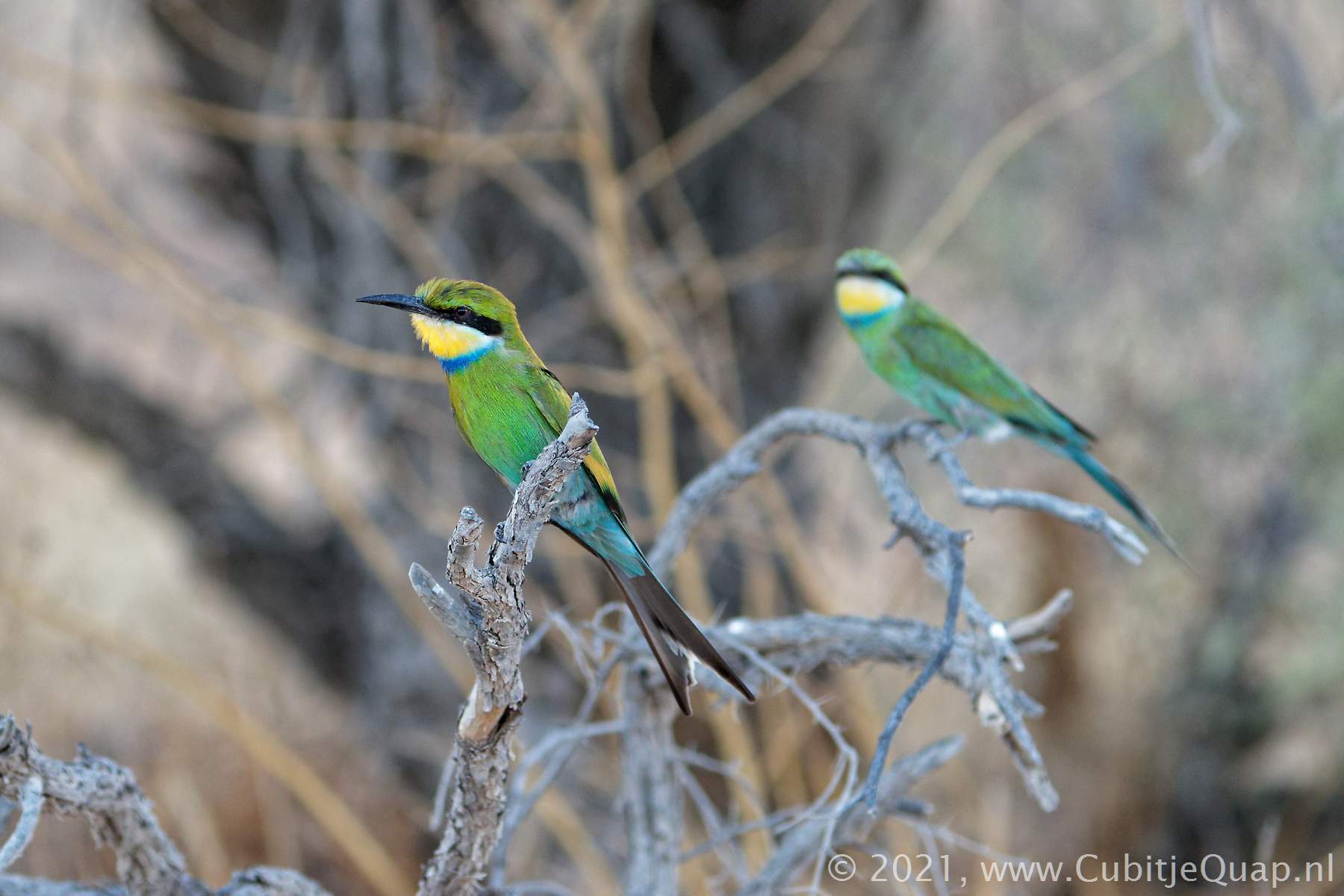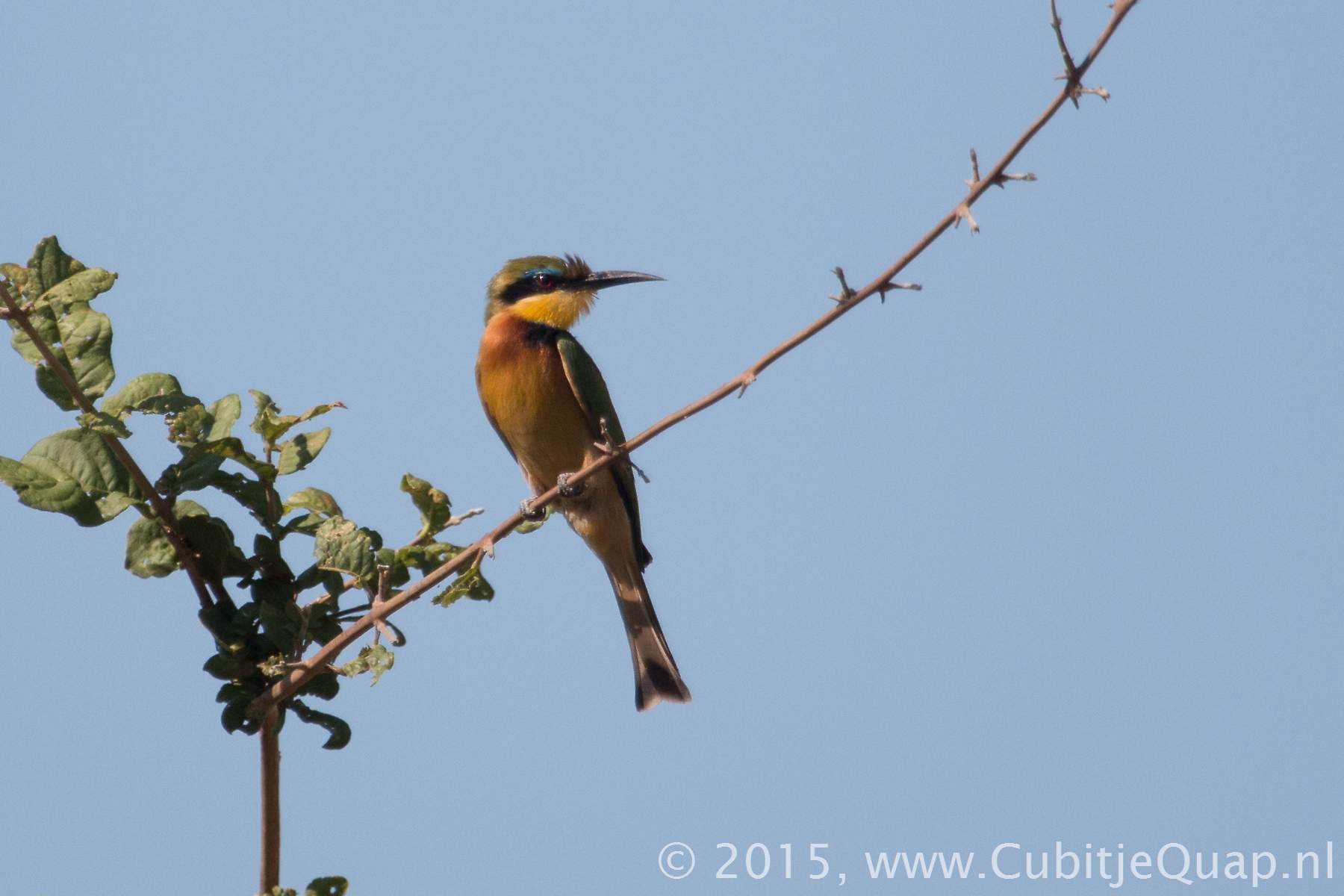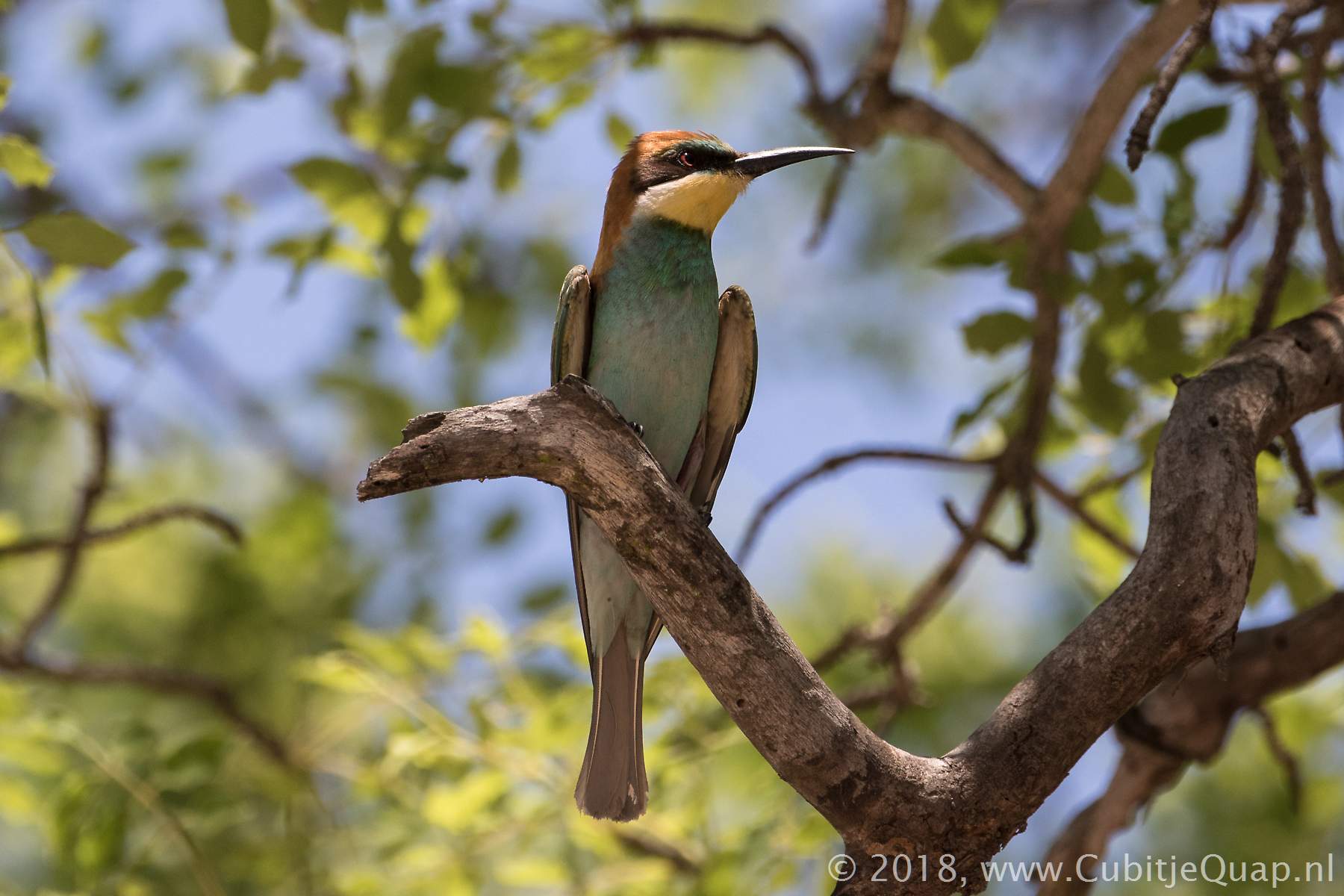Bee-eaters Information page
Description
Vivid, lively, elegant, sun-loving and mainly gregarious birds. Bee-eaters are specialized in feeding on bees and wasps, rubbing prey against branches to dislodge the venom-filled stings. Most bee-eaters hunt in the air, starting from exposed branches. There are often a number of perches in their territory that they regualarly use for hunting. They rarely come to the ground for insects such as termites of ants. Thye tend to migrate during the day. They generally roost communally, huddled in groups (clumping) along branches, all usually facing the same direction.They have pointed wings and long dexterous tails that enable fast and highly manouverable flight. The bill is decurved, allowing unobstructed sightof the prey until the point of capture. Some sunbathe with the unique bee-eater bronken-neck posture, where they lie prone with outspread wings and the head twisted to the side with one eye, which is closed, facing the sun.
Usually colonial and monogamous breeders. Their nests are tunnels (0,5 - 1,5 m) excavated in river banks, steep-sided gullies, road cuttings, quarries etc. They lay 2-6 white eggs and both sexes incubate the eggs and take care of the young. Several subspecies are co-operative breeders. The young are actively taught by example how to de-sting insects.
Scientific names
Merops = a bee-eater (greek)Birds in this category
Interesting links
Wikipediafatbirder.com




